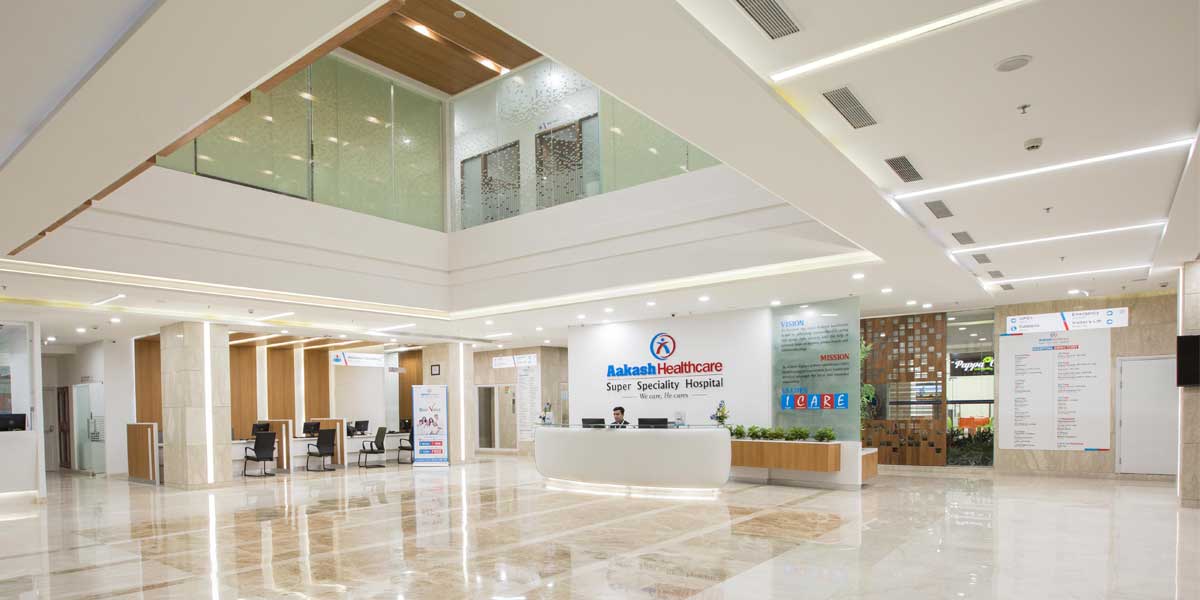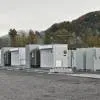Photo courtesy: Creative Designer Architects (CDA)
A recent press release by the Government of India stated that there has been increasing evidence of airborne transmission of SARS CoV-2 via aerosols; this is now considered significant by many international health agencies. Airborne transmission is a major risk in indoor settings like malls, commercial offices, hospitals, etc. Significantly, research carried out by CSIR constituent labs Centre for Cellular and Molecular Biology (CSIR-CCMB) and CSIR-Institute of Microbial Technology (CSIR-IMTECH) in September 2020 had demonstrated experimentally that SARS-CoV-2 viral particles could be detected in the air even after two hours of exit of infected persons from a room and at distances much greater than a few metres as well, strengthening evidence of airborne transmission of SARS-CoV-2.
Based on these studies and recognising the need for effective viral disinfection solutions, the challenge was to develop an effective, fail-proof retrofit device with high intensities to handle fast airflows to be fitted with minimal intervention in air ducts of existing HVAC systems that are widely used indoors in industrial and commercial environments.
UV-C disinfection
To this end, CSIR-CSIO has developed a UV-C air duct disinfection system. It can be used in any place with an existing air duct/central AC, providing a relatively safer environment for indoor activities in the current pandemic. The technology has been developed according to the requirements for deactivation of SARS CoV-2 virus contained in an aerosol with necessary ventilation measures, necessary safety and user guidelines and tested biosafety standards. UV-C deactivates over 99 per cent of viruses, bacteria, fungus and other bio-aerosols and can be used as a retrofit solution for air-handling units (AHUs) of buildings, transport vehicles and other spinoff applications. The UV-C system is said to be energy-efficient, improves airflow through coils, enhances indoor air quality (IAQ), requires less maintenance, is easy to retrofit with any existing system having AHU ducts, and has a low initial setup cost. The system comes with commercialised standards and certifications.
The release also indicated that 28 companies from around the country have been given the design patent and have been transferred the technology.
CW explores further and asks experts and concerned institutions their views on the technology.
Expertspeak
According to Vishal Kapur, Managing Director of MEHO-HCP Air Systems and Chair of ISHRAE’s Technical Committee, “Ultraviolet germicidal irradiation (UVGI) has emerged as a possible solution to eliminate the virus in recirculating air systems. The concept of air stream disinfection has been known to the HVAC industry for a long time. Germicidal lamps with UV-C radiation have been used for several years to inactivate or destroy microorganisms like bacteria, mould, yeast and viruses that severely affect IAQ.”
Supporting this, Shrikant Bapat, General Manager, Johnson Controls, says, “UVGI is a proven technology to disinfect microbes like fungi, bacteria and viruses, which could be present on the cooling coil surface of HVAC systems and in the air stream that flows through them. When used together with a good air filtration solution, UVGI deployment makes offices and public places like airports, metros and shopping malls safer from airborne infections for occupants and users.”
Creating a technology is one thing but it is implementation at ground level that will help eradicate the virus and fight the pandemic. Cenaura Technologies was one of the 28 companies to be transferred this technology. Director Ragini Ravikiran K says the company has the templates ready for installation and is ready to conduct site surveys for the same.
Similarly, Johnson Control also stated that the company has conducted many successful case studies of applying UVGI inside supply air ducts—similar to the CSIR-CSIO methodology—and also in the AHU as well as other types of HVAC units.
To ease the implementation process, Kapur says ISHRAE is about to release a white paper on UVGI equipment. The purpose of this document is to detail certain UVGI technologies that are currently available and are purported to be useful to deactivate bacteria and viruses in general and the SARS- CoV2 virus in particular in air-conditioned and/or ventilated indoor spaces. This will be followed by a detailed guidebook and training events to ensure that application in the field is technically correct.
The retrofit imperative
Hospitals and commercial spaces/offices are the most important places when it comes to the use of the disinfection technology as they are highly susceptible to indoor virus spread through air ducts. As healthcare planning expert Ravideep Singh, Associate Designer, Creative Designer Architects (CDA), says, “Hospitals are highly susceptible to exposing their occupants to high viral load levels compared to other building typologies. Therefore, adopting and implementing effective technology is crucial. Most hospitals had to devise demarcated zones for ‘COVID’ and ‘Non-COVID’ patients. While it may be easy to implement this spatially, ensuring compliance with existing mechanical systems can be quite challenging.”
With regard to the issue faced by hospitals regarding air circulation, Singh says, “Most hospital areas, such as patient rooms, ICUs, etc, are served with HVAC systems of the recirculatory type. The air from different zones is taken into a central AHU for thermal conditioning and resupplied. To address this, most hospitals had to block off the return air from the areas designated for COVID-infected patients and enhance the outdoor air intake for AHUs such that it exceeds the supply creating negative pressurisation of at least 2.5 Pa.” As for the implementation process, he explains that the installation of UVGI filters in existing hospital ducts and AHUs is a relatively straightforward process that can be implemented within a few hours. These systems can be added in parts by phasing out areas or zones available during periods of turnarounds or inoccupancy for functioning healthcare facilities.
With the second wave situation of the pandemic improving, offices are looking to open back up to employees. When asked about how disinfection technology will prepare its offices to open, Vinod Rohira, CEO, Mindspace Business Parks REIT, says, “We have already implemented required protocols. In fact, we started implementing this kind of disinfection system 10-12 months ago, along with other safety measures.” Evidently, UV-C disinfection technology is not new to the market. Cenaura Technologies and Johnson Controls also say they have existing technologies similar to this that serve the same disinfection purpose.
Tackling the challenges
Although plans have been chalked out to implement this technology, challenges are inevitable. As Ravikiran explains, “Even if companies with the transferred technology are willing to offer it for free, it is difficult to implement owing to the bureaucratic processes. For example, if we contact malls, the managers say this decision is not theirs to make and ask us to contact the mall owners; mall owners will say that they don’t operate the mall and so can't comment and refer us to the facility managers – this way, it keeps going round and round.” In her opinion, the Government should make it mandatory for all large indoor spaces to get disinfection technology installed, in the interest of saving people’s lives. “Unless people don't understand the seriousness, it’s difficult to implement as there is a cash flow crunch in the market as well. So, even important institutions like hospitals are not voluntarily willing to spend the money and get this installed.” Another challenge, as outlined by her, could have been that thousands of copies of the technology would prove ineffective. But the Government has combated this challenge by licensing and giving the authority to 28 companies to use the technology.
An additional roadblock for the industry was scepticism surrounding the use of air-conditioning as it was believed to be a medium for the rapid spread of the virus. Thus, many people opted for non-air-conditioned open-window plans to minimise the spread of the virus. However, contrary to this belief, Kapur of ISHRAE says, “All our recommendations for HVAC systems have focussed on indoor temperature and humidity levels, increased ventilation, improved filtration (air cleaning), better air-flow management and maintenance of the system. Our position has been very clear that air-conditioning systems can perform this function most effectively compared to simply opening the windows, because they correctly ventilate the space and improve IAQ with prescribed air filtration. UVGI is one of the technologies used for air-stream disinfection and can be used across applications to further mitigate the spread of the virus in indoor spaces.”
Reinforcing this, Bapat says, “Many industry organisations like ASHRAE, CDC, ISHRAE and OSHA and global corporations like Johnson Controls have been educating the market on how to tune existing HVAC systems to ensure safe and healthy IAQ. UVGI application has a long history and is currently being recognised worldwide as an effective technology to curb transmission of the CoV-2 virus through the air stream inside a conditioned and enclosed space.”
In conclusion, all associated experts clearly applaud this technology, whether new or old, and support its implementation for the greater good.




















